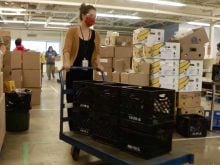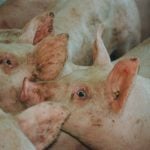A prominent Canadian ag lender is projecting a 4.8 per cent decline in farm cash receipts in 2024, thanks in part to a softening market.
Consequently, its leading economist is urging producers to find any way to save money.
“In this environment, I do think that management skills are absolutely critical,” said J.P. Gervais, vice-president and chief economist with Farm Credit Canada (FCC) during the firm’s latest economic outlook Jan. 23.
Read Also

Seeding Indigenous agricultural prosperity
National Circle for Indigenous Agriculture and Food says Indigenous agricultural success needs strong relationships.
“Any two, three, four or five per cent that you can get in terms of efficiency, in terms of productivity, will help on the bottom line, because there’s a multiplicative effect when it comes to lowering your costs and the impact on the overall profitability of operations.”
That said, Gervais is “cautiously optimistic” about Canadian agriculture this year.
“We’re going to get relief when it comes to interest rates,” he said. “We know that (input) costs for some sectors are going to be coming down. So that’s going to help profitability.”
Why it matters: Sliding crop prices are expected to throw a wrench in crop revenue this year.
That interest rate relief won’t be happening just yet. On Jan. 24, the Bank of Canada decided not to shift its overnight lending rate, citing the persistence of inflation and caution over moving rates back down too soon. That rate remains at five per cent.
The news wasn’t a surprise to Gervais. Taking to social media in the wake of the announcement, Gervais noted that inflation numbers were up month-to-month in December 2023. Likewise, he said in the video commentary, underlying inflationary pressures were “still running pretty hot.”

“Core inflation (a measure that excludes food and energy costs due to their volatility) is high, which means that it’s going to take a little bit more time before the overall inflation measure actually tracks back towards the Bank of Canada target at two per cent.
“Now, I don’t have any doubt that we’ll get there at some point in time, but what this suggests to me is that expectations of a rate cut, as suggested by financial markets, were a little bit too aggressive.”
FCC is still expecting to see three rate cuts in 2024, but not until the second half of the year, he added.
Wider view
Gervais’s caution comes from the current strain that consumers are feeling in the general economic environment. “It all starts with consumers,” he said during the Jan. 23 update.
Krishen Rangasamy, principal economist with FCC, noted that economic slowdowns have helped calm inflation in Canada. This plays into FCC’s expectation that interest rates will drop at some point this year.
“We’re forecasting growth to be below potential. In other words, you can expect inflation to keep trending towards the Bank of Canada’s two per cent target,” said Rangasamy.
FCC’s rate forecast hinges on whether the central bank becomes comfortable “about inflation sustainably going down,” he said.
“So that’s why we think they’re going to wait a little bit.”
Beyond 2024, Gervais envisions health for the overall ag industry.
“I think the long-term outlook for the industry remains extremely positive,” he said. “I think we know there is a very, very strong demand for what we can grow and produce as food. That’s the reason why I think we’re still very optimistic about the long term.”
Commodity by commodity
The Jan. 23 session featured in-depth forecasts for several ag sectors.
Relatively low prices in grain and oilseed crops will be the new normal for the time being, Gervais suggested. However, that could change suddenly if markets start to become more aware of key world events.
“Think of Russia’s war in Ukraine,” he said. “Think of the conflict in the Middle East and the possibility that it expands beyond what it is right now and has impact on cost of transportation when it comes to commodities.”
“There are a number of different factors that I think the markets are kind of being a little bit calm about and it wouldn’t take much for volatility to resume in the marketplace.”
The good news is that FCC — based on its affordability index of fertilizer prices relative to crop prices — and Statistics Canada are both projecting relief on the fertilizer front.
Using a corn-soybean rotation for Eastern Canada and a canola-wheat rotation in the West for reference, FCC predicts that fertilizer costs for the two rotations will trend downward in a similar fashion in 2024.
“That means that fertilizer prices on average relative to crop prices will be lower,” said Gervais.
“That actually is a positive sign towards some profitability.”
Despite the drop, however, projected fertilizer costs are still above the five-year average. Grain and oilseed profit margins could be tight as a result and in some cases even negative, assuming that yields are average in 2024, said Gervais, “especially for some operations that that have large fixed costs because they made some recent investments and so forth.”
Weather may also be a deciding factor. The jury’s still out on the future of drought across Canada this year.
What we do know, said Gervais, is that about 81 per cent of all agricultural land in Canada and all of the Prairies is under some level of drought.
The Canadian Drought Monitor’s last update was Dec. 31, 2023. At that time, parts of eastern Alberta had made the cut for “exceptional drought,” the monitor’s worst classification. Patches of “severe” and “exceptional” drought dotted Western Canada and all of the region warranted at least an “abnormally dry” rating.
Storms have since blown through the region, and the monitor’s outlook expected to see improved drought conditions by the end of January, although wide swathes of Alberta and patches of western Saskatchewan and south-central Manitoba were expected to stay dry.
Gervais related climate challenges to his message on management.
“Adaptation and risk management are critical factors for not only business success, but also business survival in some sense,” he said.
“So, I’m expecting that management of the risks when it comes to weather is going to be so critical this year and the next few years.”
Strong beef prices, weak herd numbers
From a nationwide perspective, 2023 was marked by record prices and good margins for Canadian beef, reported Desmond Sobool, deputy chief economist with FCC. However, there was a clear west-east divide.
“Overall, the profit margins were good in Eastern Canada,” he said.
“When you flip to the West though, the areas that were impacted by drought had feed availability and cost concerns. And so, we saw pressures on some of those margins.”

There’s good news on the horizon, the analyst said. Sobool expects that cattle prices will likely continue to rise through 2024.
“Our forecast for 2024 is actually really strong cattle prices that will support margins. We’re seeing this will continue on through the year and actually might increase in the latter half of the year.”
Also, he said, feed costs are starting to moderate, good news for feedlot operators that have felt the pinch of both feeding and sourcing replacement animals at the higher cost.
“We’re actually seeing profitability in 2024. Not as high as 2023, but still above our historical average,” said Sobool.
That echoes forecasts presented to Manitoba producers earlier this year.
Rick Wright of Cattle Consulting told attendees at a Jan. 10 beef seminar that the cow-calf producer should be expecting a good year, especially if they play their marketing cards right.
Wright urged producers to know their cost of production and weigh how those increased animal prices and current high interest play into decisions such as buying replacement stock.
“If you’re going to be a survivor in this business at the high dollars we’re trading, you need to know how much that cow is costing you, what you need to get out of that cow to be successful,” he said at the time.
The downside of those strong prices will be higher retail costs, Sobool also said. As it is, beef consumption has gone down over the past year, with some consumers shifting from beef to pork due in large part to price at the meat counter.
However, Sobool is optimistic. “Consumers like beef and have a preference for it,” he said. “So, once food inflation starts subsiding, we will likely see that transition back to consumers eating more beef.”
Continuing drought and good prices for animals headed to the ring has done little to help the contraction in the Canadian cattle herd.
“Our replacement heifers are near an all-time low,” said Sobool.
“About 51 per cent of cows and heifers are being sent to slaughter, which means those aren’t being retained to build the inventory.”
Wright also noted that trend. That’s going to be a long time resolving itself, and how much the herd will rebuild is still an open question, he said.
Even when cow-calf producers do start to rebuild, he noted, it will take time for volumes to trickle down to the feeder pens, as the supply of heifers currently being sent down the line will dry up as they start to be again held back on farms. He expects that lag time will take several years to work out.
Pork prices may improve
Last year was rough for both pork producers and processors, said Sobool. Supply exceeded processing capacity, leading to low prices. On the process- ing side, 2023 saw the announcement of several plant closures and discouraging financial updates from packers in the U.S. and Canada.
Overall slaughter in Canada increased marginally — 0.7 per cent — in 2023. Meanwhile, slaughter was up 3.7 per cent in Western Canada and down by 1.6 per cent in the East.
Last year was the second in a row that Eastern Canada’s hog industry has contracted, said Sobool. Although that’s a precarious situation, it may be a correction to the rapid increase in inventory that started in 2015.
“What it really created was an excess supply of hogs,” he said.
“As long as there was excess supply and demand wasn’t keeping up with where we were at, the hog price-to-feed ratio started coming down. That was the start of the profitability pressures.
“As that excess supply is being taken out of the market and demand is coming up a little bit, our forecast is that prices are going to start to improve. But that’s not going to happen until the middle of 2024.”
– With files from Alexis Stockford
















